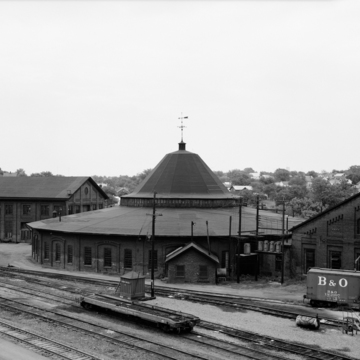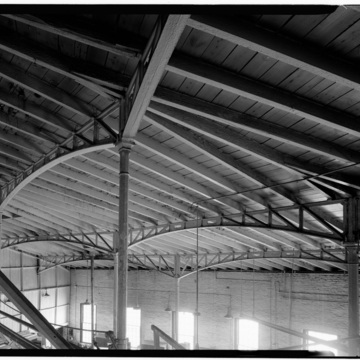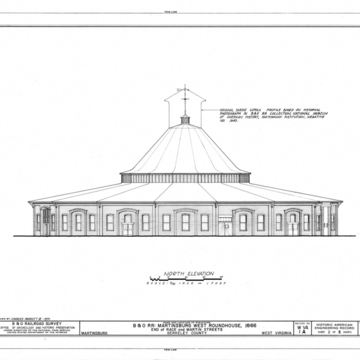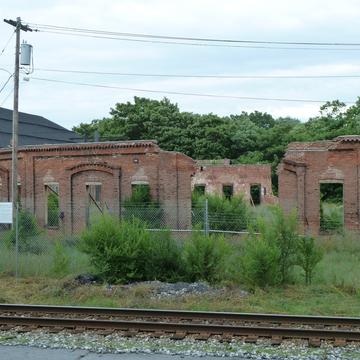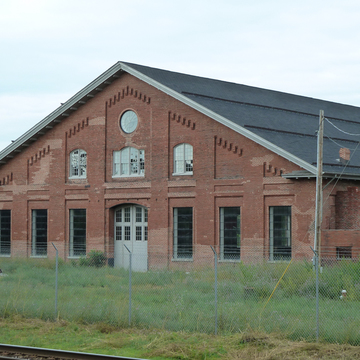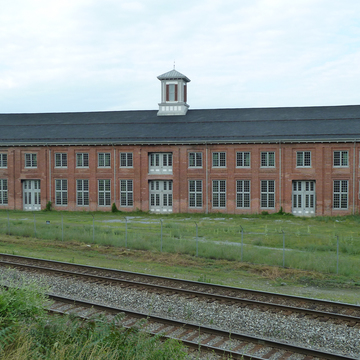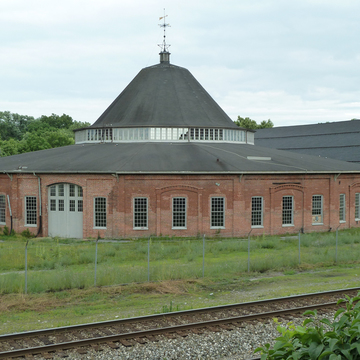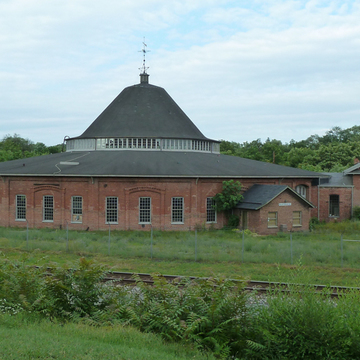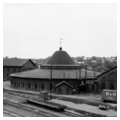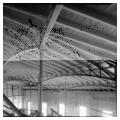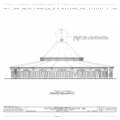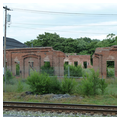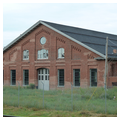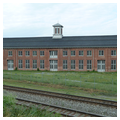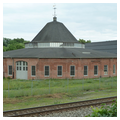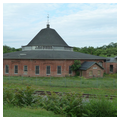The four structures that make up this industrial complex are among the most significant resources in the history of American engineering and technology. The site was first developed in the 1840s when the B&O constructed shops adjacent to the newly laid tracks. Confederate forces destroyed the works in 1861, but they were rebuilt from 1866 to 1872. For over a hundred years, they served the railroad, but their days of service seemed numbered when the Historic American Engineering Record recorded the group in 1970. The railroad abandoned the
The West Roundhouse (actually sixteensided), which dates from 1866, is an exceptional brick structure covered by a sloping roof culminating in a steeply pitched, bell-shaped central section. The roof configuration was designed in part to trap rising smoke and gases, then vent them through a louvered cupola directly over the turntable. A remarkable system of cast iron columns, some inclined, some vertical, supports the roof.
The East Roundhouse (1870–1872), which burned in 1990, was almost identical to its slightly earlier western mate. The Frog and Switch Shop, a large rectangular brick building with wood trusses and metal tension rods spanning a 100-foot roof, stands between the roundhouses. It dates from 1866, as does the similarly arranged Machine and Bridge Shop at the north end of the compound.
On April 20, 2000, a ground-breaking ceremony was held to inaugurate the B&O Railroad Shops Complex renovation project. A restoration spearheaded by the Roundhouse Authority, established by the state legislature, is currently underway to restore the buildings to serve as museums. In 2003, the shops were designated a National Historic Landmark, a fitting testimonial to their engineering significance.

